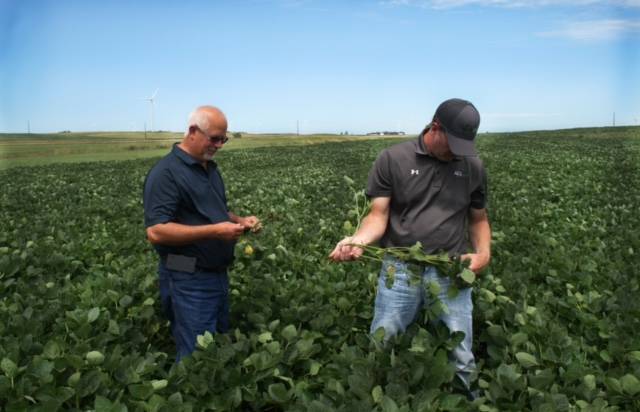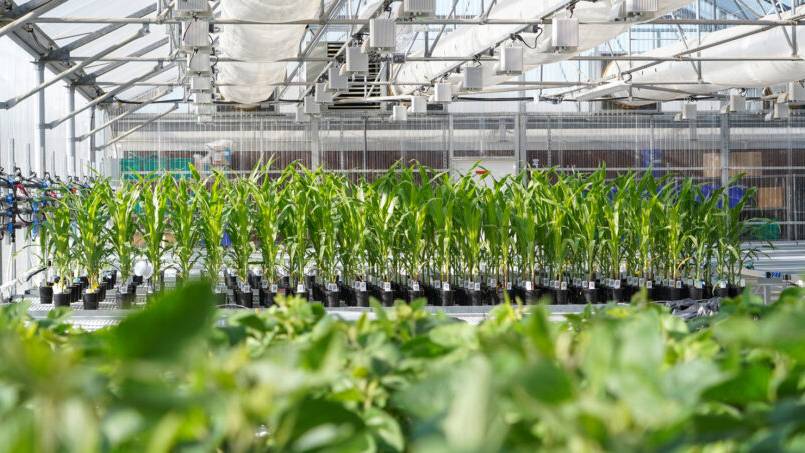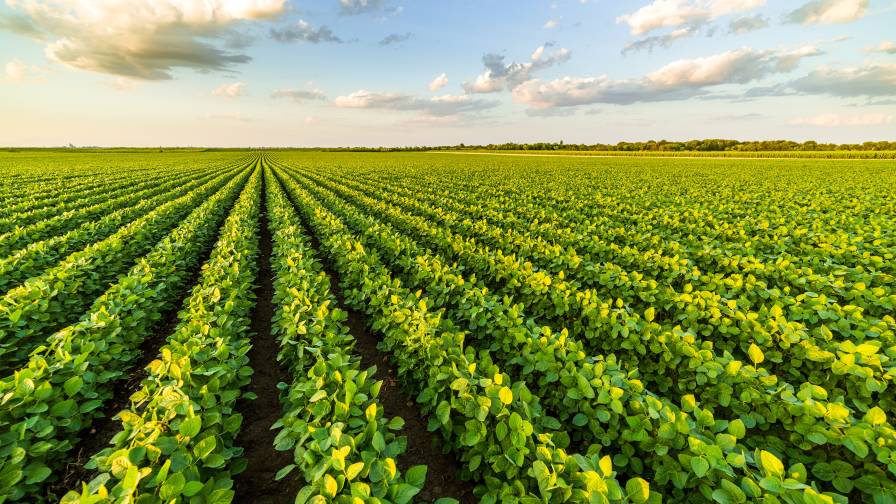CropLife Retail Week: Drought and Fertilizer Costs Updates
Eric Sfiligoj and Lara Sowinski look at weather conditions and input costs in this week’s episode.
Subscribe to CropLife Retail Week
Video Transcript:
Eric Sfiligoj: Hello. Welcome to another edition of CropLife Retail Week. I’m Eric Sfiligoj, Editor, CropLife and CropLife Iron. Here again with Lara Sowinksi. How are you doing, Lara?
Lara Sowinksi: Howdy. How are you?
ES: I’m doing good. I’m doing good. We’ve all recovered from the eclipse here in Ohio. I’m sure you have in Texas as well. For those folks who were lucky enough to be in the total eclipse path. but, yeah, now we’re kind of getting back to the regular business of agriculture and ag retail, of course, for this week’s video.
ES: So yeah, but hey, I don’t know, it looks pretty sunny where you are there in El Paso. But today again we’ll talk about weather was before here in Ohio. It is really, really pouring. We are getting a massive amount of rain. but as as to let’s put a silver lining on the clouds, if you will. this is actually a good thing.
I ran across an item, remember, we’ve talked a couple of videos in the past about how much of the country during 2023 was experiencing drought conditions. and some of the major growing states, of course, were in, you know, experiencing that as well. but I ran across a report from our friends at the National Oceanic and Atmospheric Administration.
They’ve done a research survey, and according to them, because of the exceptional wet winter and early spring that much of the country that was experiencing drought conditions, it’s now lessened. they said that the, the country right now is in the lowest drought amount, as it’s been in four years, since May of 2020. So, they actually, though, did highlight two states that are still having some issues.
Number one was New Mexico, where they say about 20% of that state is experiencing exceptional or extreme drought conditions. The other surprised me a little bit more. That was Iowa. according to the report, yeah, according to the report, our friends in Iowa who grow a lot of corn and soybean, of course, 11% of the state is still having drought issues.
However, the plus on that negative bit of news is that at the beginning of the year, it was 35% of the state was in drought conditions, and now that’s been reduced to 11%. So, so again, all these rain that we’ve been getting in Ohio and other places across the country is good for, lessening the drought conditions we’ve been dealing with.
And hopefully that means the 24 season will be a really good one for planting in the crops.
LS: That’s great. Yeah. Yeah, yeah. Good news. Just send some of your rain, you know, westward and Iowa.
ES: We will work on that. I don’t know if the winds aloft were quite in that direction, but we’ll we’ll see what can be done. We’ll see. Can do that. So, hey, one other thing to report on my end, as we’re talking about, of course, planting season one of the major crop inputs, that of course gets utilized, in particular in the corn area is fertilizer.
And, USDA put out a report they do every, April or May where they’re talking about, the, the, the, the cost of fertilizer for the grower community. and actually, they said that from 2026 to 2021, the average cost fertilizer per acre was $125, not adjusting for inflation. but of course, we’ve talked fertilizer prices really kind of went through the roof in 22 as we were coming back out of the supply chain issues from Covid.
And in that year, the cost per acre went up to almost $226 per acre. Yeah. But on the bright side, with things kind of moderating in 23, the cost for 2023 for growers of fertilizer per acre dropped to $187 per acre. So that is a 17% decrease from 2022 as high. So again, and the projection is 24 is going to be more in line with 23.
So we’re looking at about $180 per acre fertilizer costs for the corn growers. For this year. So we’ll see if that holds true.
LS: Not quite down. Were the you said one 125. That was from did the one.
ES: 25 was the through 21.
LS: Interesting.
ES: So it is a little higher but it’s not I mean almost been between 21 and 22. It almost doubled, which I’m sure. And we did hear from plenty of folks asking about sticker shock that year. So again, things went back to a little more normal in 23. And the fingers crossed 24 will also be a little more normal as well, price wise. For the folks out there.
LS: That’s good, that’s good.
ES: Yeah. So I guess you have some planting news as well to share.
LS: Yeah. Speaking of corn and soybean, this is a news item from Bloomberg, although I’ve seen it. now it’s getting picked up elsewhere across, the media. But, as we all know, when it comes to, production ag in the U.S., corn has historically been king. In fact, over the last 100 years, there have only been two years, where soybean, has exceeded corn.
That happened in 2018. And soybean, edged out, corn by about 500,000 acres the other time, soybean seeded corn was, in 1983. And for those folks, that were around then, that was the beginning of the farm prices that culminated in relief efforts such as farm made. So, however, with government subsidies and, trying to jumpstart this renewable, fuel market, more folks in the industry are expecting that we might not in 24, but in the near future.
See, soybean corn as far as the most planted, crop. so, we’re seeing and likewise, in anticipation of that, we’re seeing Cargill, Bungie, two of the companies, of course, that are doing a lot of investment in expanding, soybean crush facilities across the U.S.. And, we’re also seeing that, you know, the analyst, traders, the, chairman of the Advanced Trading Company, was quoted as saying, it’s certainly seems that that’s where we’re heading.
However, farmers aren’t quite so sure that it’s going to pan out this way. obviously, when it comes to corn, sown earlier in the season, easier to harvest. So, while there is a lot of anticipation that soybean and, renewable fuel may indeed, push soy past, corn, it’s hard to tell, but I thought that was a really interesting story.
You know, we just kind of assumed it’s always going to be corn. However, that may, indeed change in the near near near future. We’ll see.
ES: Yeah, I know having covered this market for about a quarter century now, you know, the the prevailing wisdom is, is that if if there is a reason to plant corn, corn will get planted versus soybean. But, Yeah. And you those statistics you quoted about, you know, prior years, I remember we talked about the 1983 soybean larger than corn number, because I made the analogy of the fact that, you know, most of us were watching Mash, at the time, and it was still a first run show, not reruns at that point.
So, it does go back. Some of us were around for this game, you know, but, and again, I know that in 24, of course, the planting numbers we talked about those last week. You know, 90 million in, in, corn and 86.5 million for soybeans. So, you know, corn is still ahead of soybean, but, you know, as we heard it, commodity classic this year more crush facilities or for soybean are coming online.
You know, there is a great demand for the renewable diesel and the aviation fuels part of the equation. So I anticipate it’s going to be very interesting over the next few years to see how soybean trends versus corn given, given demand. So yeah. Very good.
LS: Actually, and just real quick, on that sustainable aviation fuel, again, kind of, you know, some mixed, reporting out there as to how big that sector is going to be. However, I did, just in the last few days, run across other news items, with regards to renewable diesel and that, now, now, rail and, ocean going vessels are looking at that too.
So while, the aviation sector may be a little bit further down the road, I think there’s definitely going to be demand for it. So, yeah. good story. We’ll keep an eye on it.
ES: Amen. Amen. Yeah. Well. All right, well, then let’s go to our favorite part of the program. Your favorite, of course. And me, and hopefully our viewers as well. At least a couple of them. It is time for. Fun with numbers.
LS: Well, the last three weeks have been fun because I’ve. I want you to call three in a row. correct. Yeah. So the wedding, the easy one.
ES: We’ll take it. Yes, we’ll take it.
ES: So this week, my dear, your number is a percentage, 35%.
LS: Okay.
ES: 35%. So Miss Laura is 35%. Is that a the anticipated increase in cropland in Brazil for the 24 season? Is it be the percentage of ag ship traffic being rerouted currently because of the Baltimore Bridge collapse? Is it the percent increase in drone purchases by ag in early 2024? Or is it the percentage of fun with numbers quizzes Laura Sowinsky has gotten right so far this year?
LS: Oh, it’s D. Goodness. Gosh, you know, this is, to think about this for a second. Brother. Yeah, I’m going to go with B. Diversion B.
ES: The ship traffic.
LS: Yeah.
ES: Your streak is over. My dear, I am so sorry. No, the correct answer is a anticipated increase in cropland in Brazil for this year. I ran across a story that said that according this was, I guess Ohio State and the Brazilian Agricultural Research Corporation, did a study where they said that there’s about 70 million acres of degraded pasture land currently in Brazil that they’re hoping to convert to cropland for 2024.
And by doing that, they will increase their total agricultural area by 35% going into the season. Right. And again, a lot of the soybean is grown for the world is grown in Brazil. And again, with more demand for soybean coming from various countries and different sectors around the globe, it looks like our friends in Brazil are gearing up for more demand as well.
LS: Yeah, that’s a sizable increase. So yeah. Yeah, that was a good million acres. Yeah. He stumped me.
ES: Sorry.
LS: Back to the drawing board.
ES: All right, well, on behalf of myself and everyone here at CropLife Media Group, thanks for joining us this week. We hope you enjoyed our edition of Crop Life Retail Week. We’ll see you again soon. If you have questions or comments about today’s episode of retail, contact us by email or Twitter, or type your message in the comment section below.







